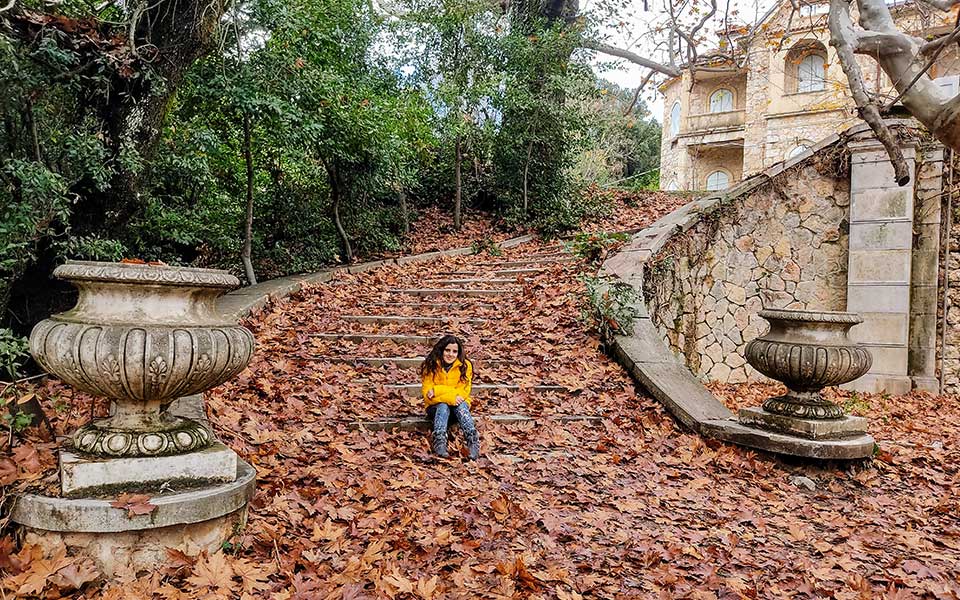“Granny, why can’t we go into the stables to see the horses?,” complains little Giorgos. Strangely, he is not disappointed to be told that this is no longer possible because there are no horses here. His grandmother goes on to recount what was in each space, using her imagination to hold on to his attention: “This is where they made cheese and milk, that is where they kept the animals, and over there was the olive press.”
We have similar thoughts. We imagine ourselves as princesses, coming out of the house, gliding down the ornate stairs which is now covered in leaves, taking tea next to the fountain or the swimming pool. How did they pass their days? What did the officers do in this beautiful building? Where did Jackie Kennedy and Haile Selassie stay when they visited? When was the abandoned gas pump last used, and were cars used around the vast estate or the ornate carriages that were recently discovered on the site?
A simple walk around the former royal estate at Tatoi will not provide answers all these questions, as most of the buildings are not accessible to the public. However there is enough material here to feed your imagination. Behind the worn walls is a great chapter of Greek history waiting to come to light.
Over the next few years, the Tatoi estate is due to be restored at the initiative of Minister of Culture and Sport, Lina Mendoni. The preliminary study for the building restoration is due to be delivered as early as May this year, so that the project can be put to tender.
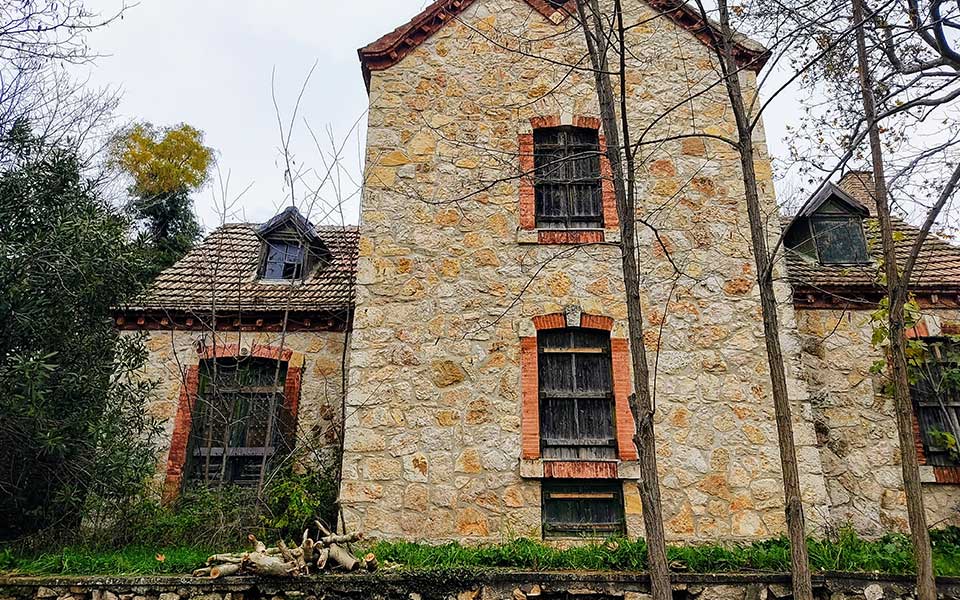
© Olga Charami
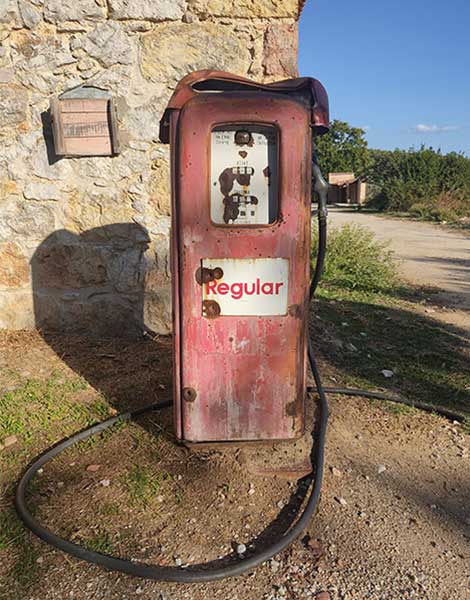
© Olga Charami
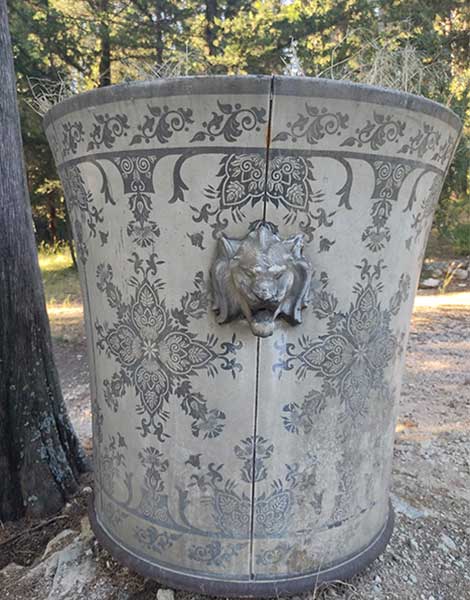
© Olga Charami
On a Sunday morning, in the midst of lockdown, there are no fewer than 50 cars parked opposite the main gate to the estate, which is known as Lefka. As the estate covers 4,200 hectares, it never feels crowded. Many of the visitors are here to use the network of forest roads which are ideal for cycling. The largest part of the estate is covered in a forest of Aleppo pine, dotted in which can be found the 30 listed buildings of the royal palace.
The short walk we recommend is suitable for the whole family, is just 5 kilometers long on paved and forest roads, with significant elevation changes. It takes in many of the buildings and also the storage facilities housing the royal family’s cars and movable property. Furniture, personal possessions, musical instruments and works of art are now being taken out of storage and restored.
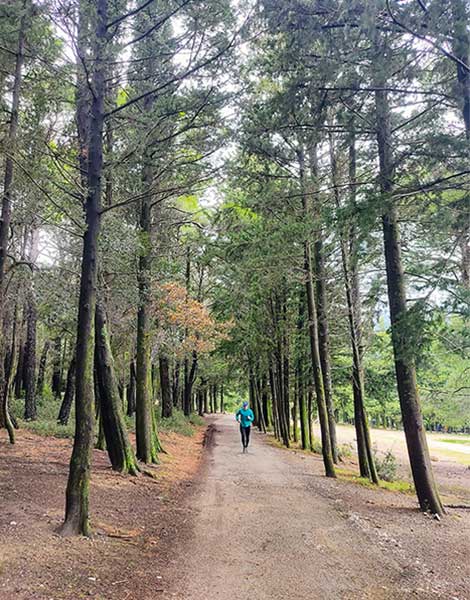
© Olga Charami
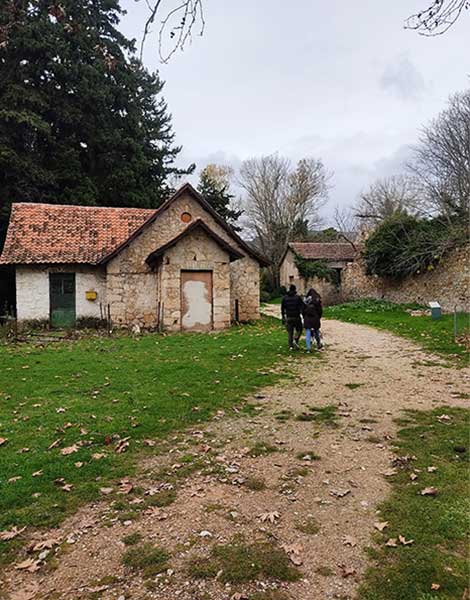
© Olga Charami
Visitors can move about freely. We found the map of the site quite useful in tracing the start of the walk, then we turned left at the guardhouse of the inner gate, bringing us first to the main house. Children play on bikes, others walk their dogs, while some gaze silently at the imposing building. A deviation further down will bring you to the cistern and the swimming pool, which present a more disappointing picture today.
An easy stroll will bring you to the estate’s main road. After the big empty field on the right, a right turn leads into a deep forest. The field is usually full of people picnicking, children on bikes and dogs. Even on a rainy day this is a popular spot. Upon entering the forest, head towards the cemetery. There is total calm along the way, with very few encounters aside from the odd lone runner or cyclist. On Paleokastro Hill stands the marble mausoleum of King Constantine I, Queen Sofia and King Alexander, the Church of the Resurrection and single graves belonging to kings and princes, most of which are surprisingly simple in style.
The return is downhill, leading to the other side of the field, where you will find the pigsty, the cattle shed (where the carriages will be put on display once they are restored), to dairy and the buttery. Further along, you will pass the stables, before coming back onto the main road. We crossed to follow the path on the opposite side. We saw the old officers’ quarters and the police guarding the estate, the workers’ quarters and the hotel, before circling back through the dense vegetation to the main gate.
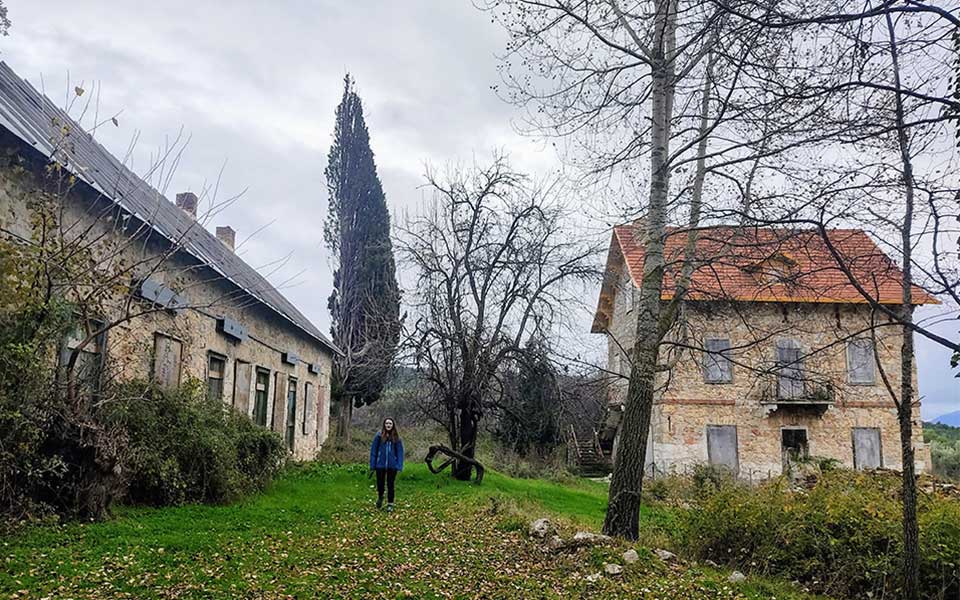
© Olga Charami
History and northern European architecture in the forest
The fate of the estate and royal residence at Tatoi divided public opinion. They were looted on several occasions, they played host to great personalities of the 19th and 20th centuries, and were the stage for historical events, from the ousting of King Constantine I and the deaths of kings Alexander and Paul, to the swearing in of the governments of Eleftherios Venizelos, Dimitrios Rallis and Giorgios Papandreou.
It was King George I who bought the first tracts of land for the estate in 1872. His priority was developing and promoting the forest, rather than building a residence, so he started by designing the park, which he entrusted to Danes Hans Ludvig Münter and, later, Otto Weismann. They created an estate which is two-thirds true forest and one-third orchard, olive grove and vineyard. The dense network of forest roads ran through the forest and the cultivated parts, across picturesque bridges, and two man-made lakes, Kithara and Hines.
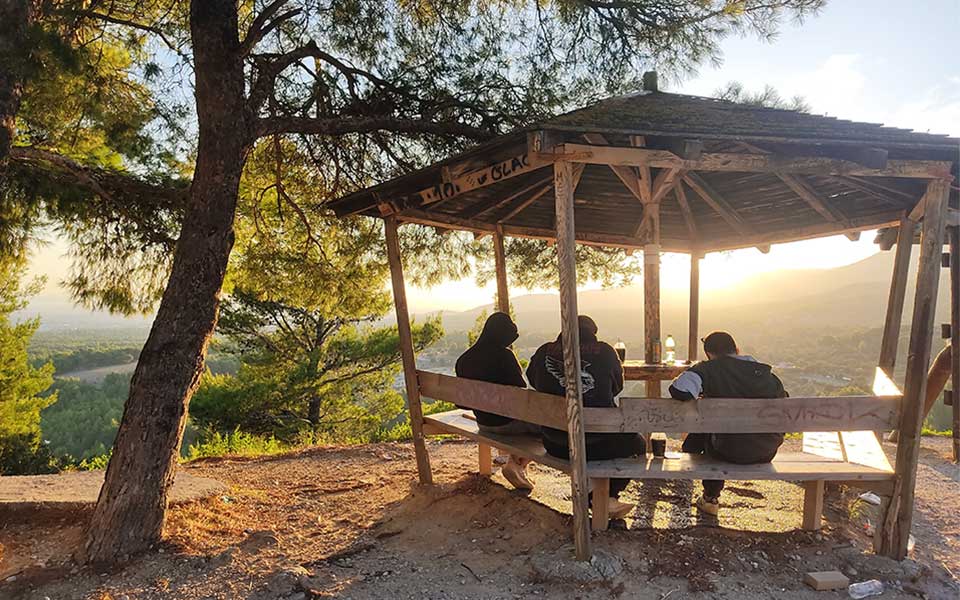
© Olga Charami
The construction of the imposing palace began in 1884 on designs by architect Savvas Boukis, copying the farm on the Peterhof estate in St Petersburg, at the request of Russian-born Queen Olga.
Its glory days came to an end in 1916, when a devastating fire swept through the estate burning the forest and many of the buildings. The estate was restored during the Second Republic (1924-1935) by the government under the direction of a new estate manager, Vassilios Drouvas, who played a pivotal role in safeguarding it during the occupation in World War II. In 1994, it was subjected to repeated lootings, and one year later Tatoi once again surrendered to the flames, this time by arson. In 1948 the royal family returned to Tatoi, only to leave again in 1967 after the counter-coup against the military junta. A third large fire and final fire burned the estate in 1974.
The ownership of the estate passed between the royal family and the state several times depending on the regime, either in exchange for compensation or by confiscation. After the latest confiscation in 1994, the former king, Constantine, took his case to the European Court of Justice, where he won and the state was forced to pay compensation. In 2003, Tatoi passed into the ownership of the state and was listed for preservation as a modern monument.
This article was first published in Greek on kathimerini.gr.

